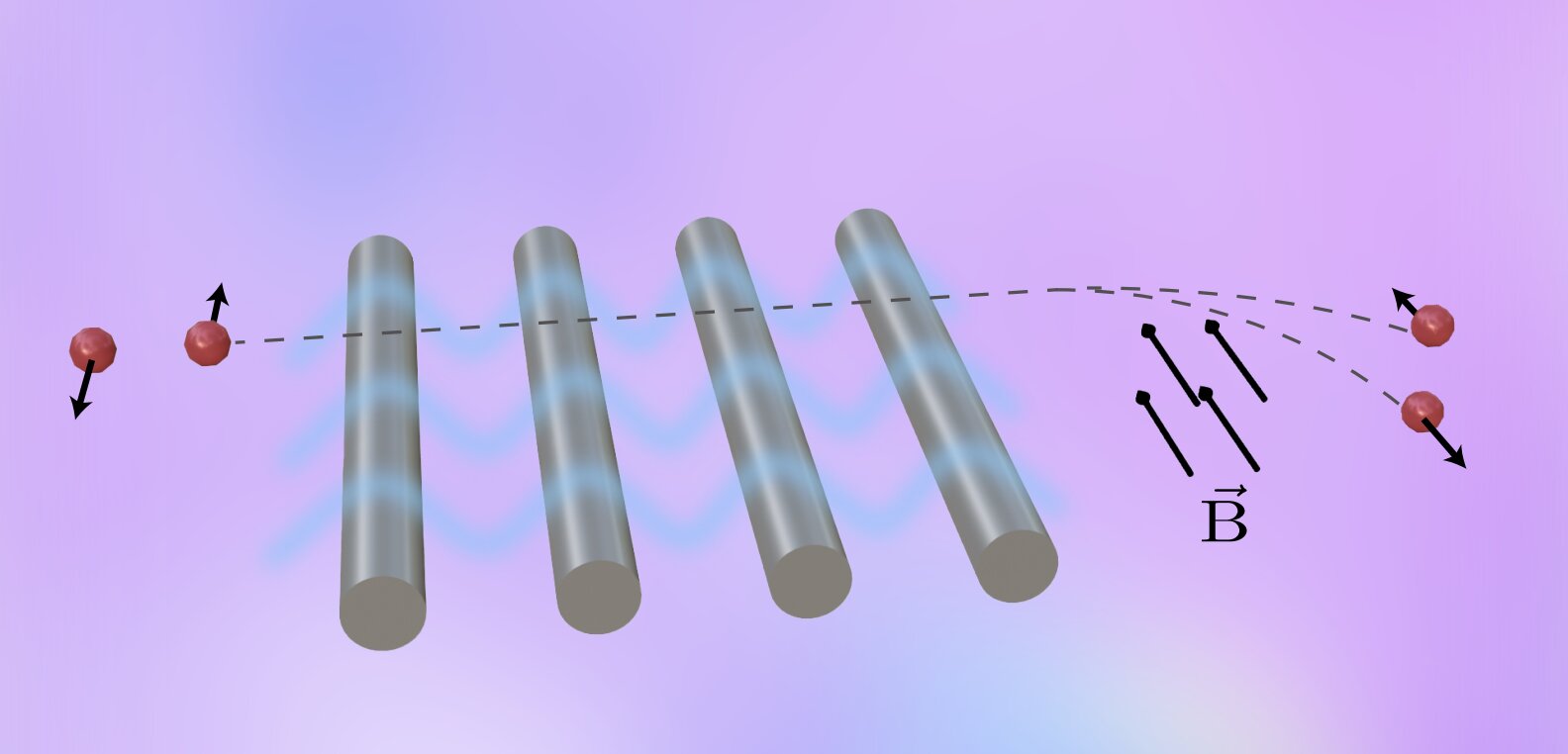Polarized electrons are electrons in which spins have a “preferred” orientation or are preferentially oriented in a specific direction. The realization of these electrons has notable implications for physics research, as it can pave the way toward the creation of promising materials and enable new experiments.
Researchers at East China Normal University and Henan Academy of Sciences recently introduced a new method to polarize free electrons in a laboratory setting using near-field optical techniques, which entails the application of light beams from an optical device positioned close to a sample. Their paper, published in Physical Review Letters, could open interesting new possibilities for high-energy physics, quantum technology development and materials science.
“The initial idea for this study took root two years ago while I was a Postdoctoral researcher in Prof. Francisco Javier Garcia de Abajo’s group, renowned for their theoretical work on optical excitations in electron beams,” Deng Pan, one of the researchers who carried out the study, told Phys.org. “Since then, the field of photon-induced near-field electron microscopy (PINEM) has gained momentum, emerging as a prominent topic in electron microscopy.”
PINEM is a promising microscopy technique that could allow researchers to manipulate the quantum properties of electrons, which could potentially unveil new quantum computing mechanisms that rely on free electrons. Previous works primarily tried to use this technique to manipulate the orbitals and momenta of electrons. In their study, Pan and his colleague Hongxing Xu set out to explore its potential use for polarizing free electrons.
“I began to question whether a similar approach could be employed to alter the spin state of electrons or even polarize electron beams,” Pan said. “Engaging in discussions with several experts in electron beam theory, most of them believed such an effect to be undetectable, given that the magnetic field within the electromagnetic field is significantly weaker than the electric field component. Consequently, it was both surprising and unexpected that my calculations ultimately demonstrated the substantial electron polarization effect within the optical near-field.”
2023-06-04 22:00:04
Post from phys.org
